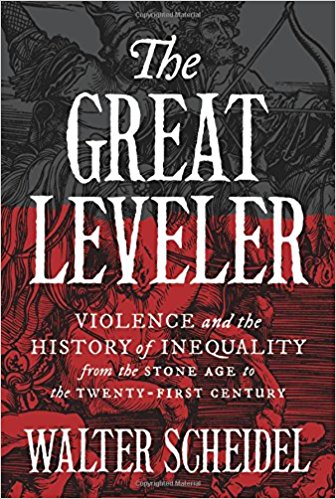The widespread contemporary availability of research studies is unprecedented. Researchers have taken their work into ever more detailed aspects of their subjects; extended this across the ages, from prehistoric times all the way into the future; as also spanning continents and civilizations, in the search for the hidden nooks and crannies, as it were, all the possible areas as yet unexplored. So that today, even if you have no specialized training, and based on a large amount of reading, you can take some aspect of the human experience, make comparisons across space and time, between styles of wedding jewellery and dress, for example, or of any specific aspect of art and culture, or of politics and economics. It helps to be a specialist, of course. But the non-specialist has a role in interpreting difficult subjects for the layman.
Walter Scheidel is not a specialist. Economic inequality is generally taken to be a subject for the trained economist, but his subjects are the classics, history and human biology, though he has published works on social and economic history. Nevertheless we have here a study of economic inequality with a schema that is apparently applicable across the centuries, from the beginning of human history, in fact; and even before that, he cites the African great apes, the gorilla, the chimpanzee and the bonobo, and then homo erectus and the early hunter-gatherers while going on to the present. And across civilizations, from the Aztecs and the Incas to Athens and Rome, to the Han dynasty in China and the Zaibatsu in Japan. The study can range so far and wide because of recent research; he maintains that it could not have been written twenty or even ten years ago.
The terms of reference are quite clear. This book is about economic inequality based on the study of two parameters: the Gini Coefficient and the percentage share of income and wealth going to specific sections of the population, generally either at the top or at the bottom. The causes for inequality are socio-economic; so inequality rooted in gender, in race or ethnicity, in age and ability or in religious belief, education, health and political orientation, is not covered; only that affected by broad socio-economic forces and violent shocks to the economy. The study is also confined to intra-country comparisons within a chosen timeframe; inter-country comparisons are not included.

